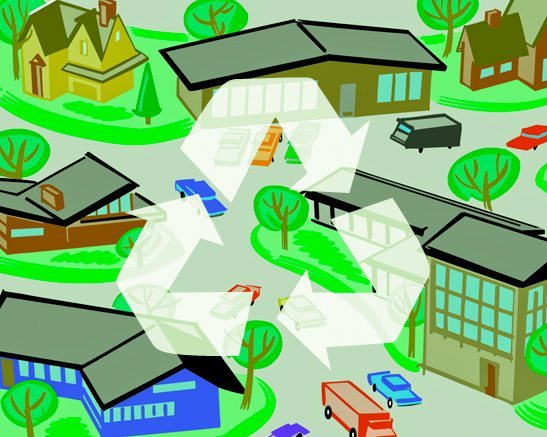Is it possible to build a sustainable suburb? The answer depends largely upon your perspective.
Of course, sustainability is a word freely associated these days with eco-friendly building materials, alternative energy and “living off the grid,” and is usually used in conjunction with the concepts of urban living, light-rail and transportation-oriented development. However, some of the first sustainable buildings were lovingly referred to as “land ships,” and built far from cities.
The deserts of Taos, N.M., for example, still host these forward-thinking renegade buildings dating back to the late 1960s and 1970s, and were colorfully branded by many as “crazy hippy stuff.” And certainly these buildings are a far cry from the buildings and locations we think of as locations of sustainable development today.
Arizona has long been associated with sprawl, and frankly it’s the reason why the sustainable movement has been slow to catch. However, with a struggling economy and real estate development virtually at a standstill, it’s important to think beyond our limited frame of reference. But the suburb? Can it really be sustainable? Our twin love affair with privacy and the automobile has made the suburb far from a likely place to orchestrate sustainability. Places where garages line streets instead of trees and retail buildings have walls around them virtually imposing a drive instead of a walk. But there is a sustainable sun on the horizon.
Arizona State University’s Stardust Resource Center has created a Growing Sustainable Communities Initiative, and its strategies for growing sustainable communities in the Valley of the Sun include:
- Promoting mixed land uses
- A range of housing types
- Thriving economies
- Environmentally responsive design
- Having a variety of transportation choices
- Compact development
- Making places safe
- Promoting healthy living
- Community engagement
I could write four pages about each of those points, but essentially they mean: building sustainably occurs block-by-block, street-by-street, house-by-house. It is an organic process and there is no cookie cutter, one-size-fits-all approach. In fact, the standard of cookie cutter replication is what has created much of the challenges in every community built after 1950 in Arizona.
To be successful, it is imperative that we change our standard “square mile” approach to development, where commercial businesses exist only on the edges and residential homes on the interior and there is virtually no interplay between them. No parks, and no tree-lined streets. A better strategy is to develop on the quarter-mile, where neighborhoods have work and play uses and schools and shopping centers interact with residential neighborhoods through a network of paths and pedestrian/bike connections — just like the village concepts of the historic neighborhoods built prior to the 1950s. Ask any Midwesterner what they miss about home and I’ll bet they say their “neighborhoods.” There’s a reason why.
What the sustainable movement is advocating is greater creativity on the developer side and less regulation and restrictions on the government side. Scott Carlin, an associate professor of geography at the C.W. Post Campus of Long Island University, makes an excellent case for a deeper theory of sustainability. He suggests we re-invigorate ties to cities and villages, by building new homes only where there are existing water and sewer lines, sidewalks, schools, businesses and the other infrastructure within a reasonably close radius. In other words, so we can get out of our cars and walk.
What about existing neighborhoods? Well, they can be re-imagined as sustainable by relaxing zoning code to allow for commercial uses consistent with vibrant neighborhoods and by resisting the status quo. It will also happen when residents advocate for and pursue the creation of public amenities like parks and pathways and tree-lined streets. Even the Urban Land Institute recognizes the opportunities suburbs represent because it’s where the biggest gains could be made. Still, it cautions that connecting the dots between suburban projects through effective sub-regional planning is essential.
It is possible for us to focus on more than buildings when we think of sustainability. With a bit of imagination, and the commitment to integrate the principles of sustainability even on the outskirts of town, we can succeed. Surprisingly, in fact, we won’t be creating anything new. Because, it’s when we look to the past and incorporate the best of what it means to live in an American neighborhood we win. Sustainability is certainly a look to the future, but its reality and its secrets are grounded in our American past.




